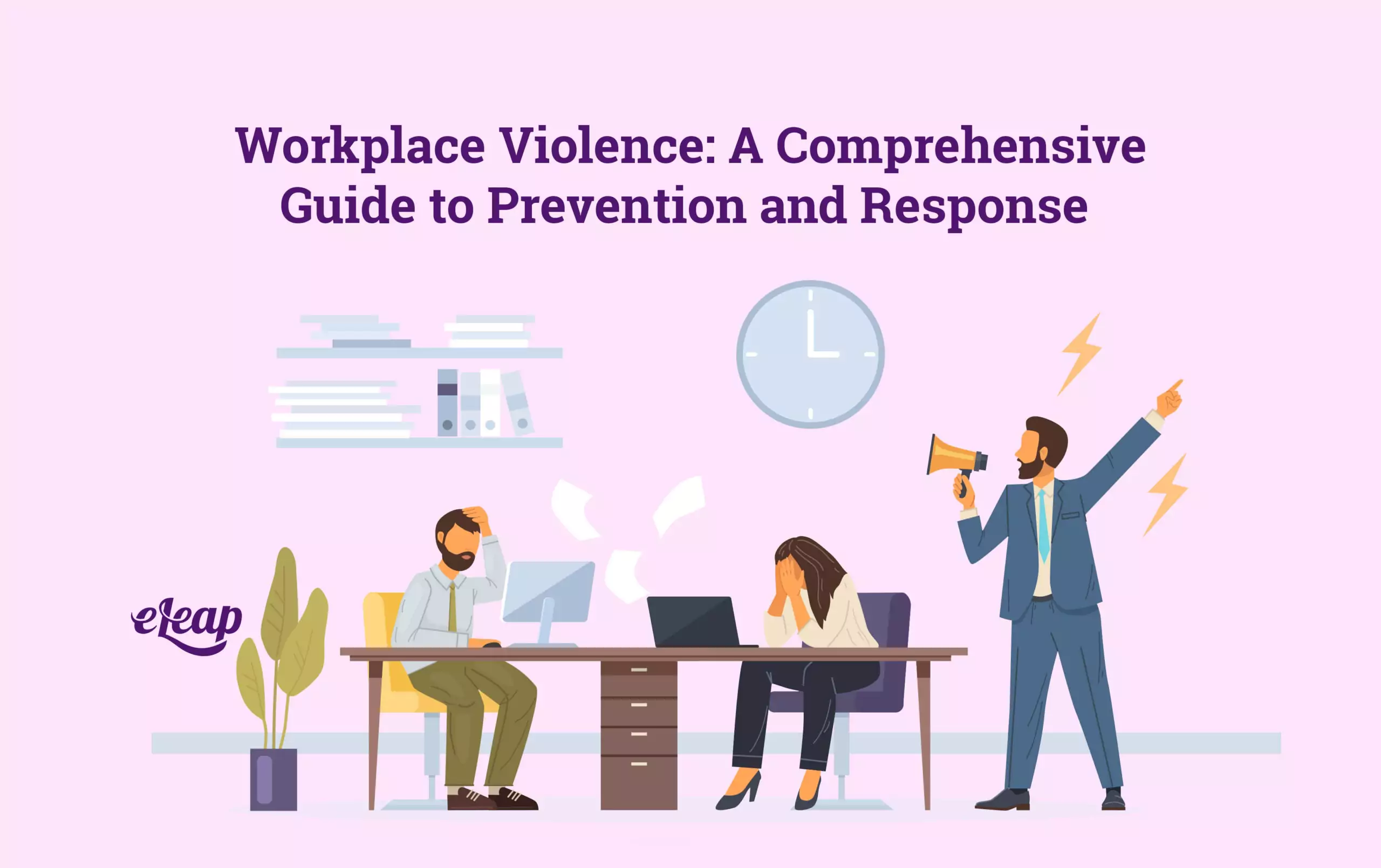Workplace Violence: A Comprehensive Guide to Prevention and Response

In today’s competitive and fast-paced work environment, it is essential to consider the safety and well-being of employees. Unfortunately, workplace violence has become a growing concern in various industries, threatening workers’ physical and emotional health while impacting overall productivity. This article delves into workplace violence to raise awareness, identify warning signs, and provide preventative measures for employers and employees.
Understanding Workplace Violence
Definition of Workplace Violence
The term workplace violence refers to all types of aggressive behaviors in the workplace, such as physical assaults, threats, intimidation, harassment, as well as any other conduct that may cause fear or harm to employees. It can be perpetrated by fellow employees, supervisors, customers, or even external individuals with malicious intent.
Different Forms of Workplace Violence

Workplace violence is not limited to physical aggression. It can manifest itself in verbal abuse, bullying, stalking, or cyberbullying. Understanding the various forms is crucial in addressing and preventing such incidents effectively.
Factors Contributing to Workplace Violence
Organizational Factors
Certain organizational factors may create an environment conducive to workplace violence. High stress levels, poor management practices, lack of communication, and inadequate security measures can escalate tensions and conflicts.
Personal Factors
Individual characteristics, such as personal problems, mental health issues, or substance abuse, can also play a role in instigating violent behavior within the workplace.
Identifying Warning Signs
Behavioral Indicators
Recognizing warning signs is key to preventing workplace violence. Sudden changes in behavior, increased aggression, and expressions of violent intentions should not be overlooked.
Situational Indicators
Specific situations, like conflicts between employees, customer complaints, or job terminations, can elevate the risk of violent incidents. Identifying these scenarios can help in taking timely preventive action.
Preventive Measures for Employers
Implementing Policies and Procedures
Creating and enforcing clear policies against workplace violence is essential. Employers should establish reporting mechanisms and consequences for violent behavior.
Training and Education
Educating employees about workplace violence, its impact, and preventative strategies empowers them to play an active role in maintaining a safe work environment.
Creating a Supportive Work Environment
The likelihood of workplace violence can be significantly reduced by promoting a culture of respect, open communication, and support.
Dealing with Workplace Violence Incidents
Immediate Response Protocols
Having well-defined protocols for responding to violent incidents ensures immediate action is taken to mitigate harm and protect those involved.
Reporting and Documentation
Encouraging employees to report any concerning behavior and documenting incidents helps gather evidence and take appropriate measures.
Support and Assistance for Victims
Providing support and counseling to victims of workplace violence helps them recover and cope with the aftermath.
Legal and Ethical Aspects
Laws and Regulations
Understanding the legal framework surrounding workplace violence is vital for compliance and ensuring appropriate measures are in place.
Ethical Responsibilities of Employers
Beyond legal requirements, employers have an ethical duty to safeguard the well-being of their employees and promote a safe workplace.
Employees and organizations affected by workplace violence
Physical and Emotional Effects
Workplace violence can cause severe physical injuries and long-lasting emotional trauma to victims.
Productivity and Financial Consequences
Incidents of violence can disrupt productivity, increase absenteeism, and result in financial losses for the organization.
Strategies for Building a Safer Workplace
Conflict Resolution and Mediation
Promoting conflict resolution techniques and mediation can help prevent escalation to violence.
Enhancing Security Measures
Investing in security measures, such as surveillance systems and access control, enhances workplace safety.
Promoting a Culture of Respect
Creating a culture that values respect and tolerance reduces the likelihood of conflicts escalating to violence.
The Role of Employees in Preventing Workplace Violence
Creating Awareness
Educating employees about workplace violence empowers them to recognize and report concerning behaviors.
Reporting Concerns
Encouraging employees to report potential threats helps in addressing issues before they escalate.
Case Studies
Real-Life Examples of Workplace Violence Incidents
Examining real-life case studies highlights the importance of proactive prevention and response measures.
Conclusion
Workplace violence is a serious issue that demands immediate attention from employers and employees alike. Understanding the different types of harassment, recognizing warning signs, and taking preventive measures will help organizations create a safer and more productive work environment. The collective efforts of all stakeholders are crucial in curbing workplace violence and fostering a culture of respect and empathy.
FAQs
What are the common forms of workplace violence?
Workplace violence can be physical assaults, verbal abuse, bullying, harassment, and cyber bullying.
How can employers prevent workplace violence?
Employers can prevent workplace violence by implementing clear policies, providing training, and fostering a supportive work environment.
What should employees do if they witness concerning behavior at work?
Employees should report concerning behavior to their supervisors or HR department to ensure timely intervention.
Are there legal implications for workplace violence?
Workplace violence may have legal consequences for perpetrators and employers who fail to address it appropriately.
What impact does workplace violence have on productivity?
Workplace violence can disrupt productivity, increase absenteeism, and lead to financial losses for organizations.